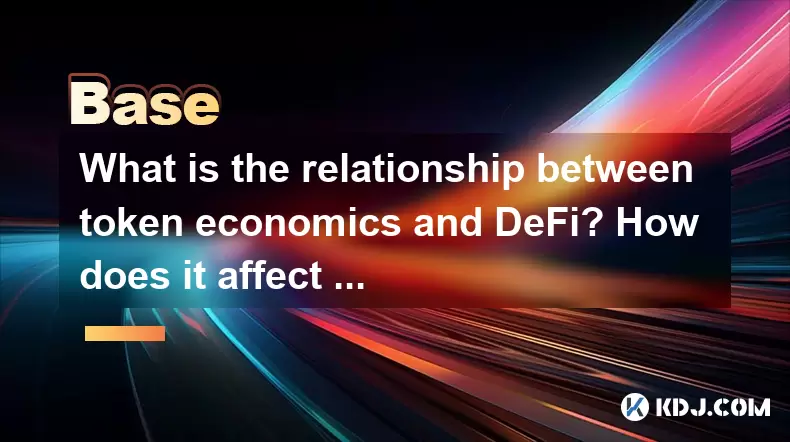-
 Bitcoin
Bitcoin $119800
1.38% -
 Ethereum
Ethereum $3873
3.25% -
 XRP
XRP $3.247
1.85% -
 Tether USDt
Tether USDt $1.001
0.02% -
 BNB
BNB $840.4
5.94% -
 Solana
Solana $190.0
2.55% -
 USDC
USDC $1.000
0.03% -
 Dogecoin
Dogecoin $0.2433
2.69% -
 TRON
TRON $0.3197
-0.05% -
 Cardano
Cardano $0.8367
1.39% -
 Sui
Sui $4.327
3.11% -
 Hyperliquid
Hyperliquid $44.00
0.31% -
 Stellar
Stellar $0.4461
1.76% -
 Chainlink
Chainlink $19.25
4.61% -
 Hedera
Hedera $0.2941
3.90% -
 Bitcoin Cash
Bitcoin Cash $598.4
6.89% -
 Avalanche
Avalanche $26.19
4.67% -
 Litecoin
Litecoin $115.1
0.50% -
 Shiba Inu
Shiba Inu $0.00001427
1.55% -
 Toncoin
Toncoin $3.379
2.01% -
 UNUS SED LEO
UNUS SED LEO $8.966
-0.16% -
 Ethena USDe
Ethena USDe $1.001
0.02% -
 Uniswap
Uniswap $11.04
4.16% -
 Polkadot
Polkadot $4.239
2.00% -
 Monero
Monero $324.6
0.36% -
 Bitget Token
Bitget Token $4.672
2.46% -
 Pepe
Pepe $0.00001294
2.69% -
 Dai
Dai $0.0000
0.01% -
 Cronos
Cronos $0.1443
2.71% -
 Aave
Aave $302.9
1.98%
What is the relationship between token economics and DeFi? How does it affect liquidity?
Token economics is crucial for DeFi, influencing liquidity and platform success through well-designed models and incentives.
May 11, 2025 at 09:14 am

The relationship between token economics and decentralized finance (DeFi) is pivotal in understanding how modern blockchain ecosystems function and thrive. Token economics, often referred to as tokenomics, is the study of how tokens behave within an economy. It encompasses the design, distribution, and management of tokens, which can significantly impact the success and functionality of DeFi platforms. In the realm of DeFi, token economics plays a crucial role in determining liquidity, which is essential for the smooth operation of financial services on the blockchain.
The Role of Token Economics in DeFi
Token economics is the backbone of any DeFi project. It defines how tokens are created, distributed, and used within the ecosystem. In DeFi, tokens serve multiple purposes, including governance, utility, and as a means of value exchange. The design of token economics can influence user behavior, incentivize participation, and ensure the long-term sustainability of the platform.
For instance, in many DeFi protocols, tokens are used to incentivize liquidity providers. By offering rewards in the form of tokens, these platforms can attract more users to deposit their assets, thereby increasing the liquidity available for trading, lending, and borrowing. The effectiveness of these incentives depends heavily on the token's economic model, including its supply, distribution mechanism, and the perceived value of the token.
How Token Economics Affects Liquidity
Liquidity is a critical factor in the success of any DeFi platform. It refers to the ease with which assets can be bought or sold without causing significant price changes. Token economics directly impacts liquidity through various mechanisms.
One of the primary ways token economics affects liquidity is through token incentives. Many DeFi platforms use token rewards to encourage users to provide liquidity. For example, a platform might offer its native token to users who deposit assets into a liquidity pool. The more attractive the token incentives, the more likely users are to participate, thus increasing the pool's liquidity.
Another aspect is token supply and demand. The total supply of a token and its distribution can influence its value and, consequently, the liquidity of the platform. A well-designed tokenomics model can ensure a balanced supply and demand, preventing scenarios where a token's value drops significantly due to oversupply, which could discourage users from participating in the ecosystem.
Tokenomics Models and Their Impact on DeFi Liquidity
Different tokenomics models can have varying impacts on DeFi liquidity. Let's explore some common models:
Fixed Supply Models: In these models, the total supply of tokens is fixed from the outset. This can create a perception of scarcity, potentially increasing the token's value over time. However, if the initial distribution is not well-managed, it could lead to centralization of token ownership, which might negatively affect liquidity.
Inflationary Models: These models involve a gradually increasing supply of tokens. They can be used to incentivize participation by continuously rewarding users, but they must be carefully managed to avoid devaluing the token and reducing liquidity.
Deflationary Models: In deflationary models, the token supply decreases over time, often through mechanisms like token burning. This can increase the token's value, but it might also discourage new users from joining the platform if they perceive the entry cost as too high.
Each of these models has implications for how liquidity is managed and maintained within a DeFi ecosystem.
Case Studies: Token Economics in Action
To illustrate the impact of token economics on DeFi liquidity, let's look at a few case studies:
Uniswap (UNI): Uniswap, a decentralized exchange, uses its native token, UNI, to incentivize liquidity providers. By distributing UNI tokens to users who provide liquidity to its pools, Uniswap has successfully attracted a large number of participants, significantly enhancing its liquidity. The token's distribution model and the perceived value of UNI have been key factors in maintaining high liquidity levels.
Compound (COMP): Compound, a lending and borrowing platform, uses its COMP token to reward users who participate in its governance and provide liquidity. The distribution of COMP tokens has helped Compound maintain a robust liquidity pool, as users are incentivized to deposit their assets in exchange for governance rights and token rewards.
These examples demonstrate how well-designed token economics can enhance liquidity and contribute to the success of DeFi platforms.
Challenges and Considerations in Token Economics Design
Designing effective token economics for DeFi platforms involves several challenges and considerations. One of the primary challenges is balancing incentives. Token incentives must be attractive enough to encourage participation but not so generous that they lead to token devaluation.
Another consideration is token distribution. Ensuring a fair and decentralized distribution of tokens is crucial for maintaining a healthy ecosystem. Poorly managed token distributions can lead to centralization, where a small group of users holds a majority of the tokens, potentially manipulating the market and reducing liquidity.
Regulatory compliance is also a significant factor. DeFi platforms must navigate the complex landscape of regulations related to token issuance and distribution. Ensuring compliance can be challenging but is essential for the long-term sustainability of the platform.
Practical Steps for Implementing Token Economics in DeFi
Implementing effective token economics in a DeFi platform involves several practical steps:
Define the Token's Purpose: Clearly define the role of the token within the ecosystem. Will it be used for governance, as a utility token, or as a means of value exchange? Understanding the token's purpose will guide its design and distribution.
Design the Tokenomics Model: Choose a tokenomics model that aligns with the platform's goals. Consider whether a fixed supply, inflationary, or deflationary model would be most effective.
Plan Token Distribution: Develop a strategy for distributing the tokens. This might involve initial allocations to founders, investors, and users, as well as mechanisms for ongoing distribution, such as liquidity mining or staking rewards.
Implement Incentive Mechanisms: Design incentive mechanisms to encourage user participation. This could include rewards for providing liquidity, participating in governance, or using the platform's services.
Monitor and Adjust: Continuously monitor the token's performance and the platform's liquidity. Be prepared to adjust the tokenomics model as needed to maintain a healthy ecosystem.
By following these steps, DeFi platforms can create a robust token economics model that enhances liquidity and supports the platform's overall success.
Frequently Asked Questions
Q: How can token economics help prevent liquidity crises in DeFi platforms?
A: Token economics can help prevent liquidity crises by incentivizing users to provide liquidity through token rewards. By carefully managing token supply and distribution, platforms can maintain a stable and attractive ecosystem that encourages continuous participation. Additionally, implementing mechanisms like liquidity mining and staking can ensure that there is always a pool of assets available for trading, lending, and borrowing.
Q: What are the risks associated with token incentives in DeFi?
A: While token incentives can attract liquidity, they also come with risks. Overly generous incentives can lead to token devaluation, as the increased supply of tokens might outpace demand. This can create a negative feedback loop, where the declining value of the token discourages further participation. Additionally, if the token distribution is not well-managed, it can lead to centralization, where a small group of users holds a majority of the tokens, potentially manipulating the market.
Q: How do regulatory considerations impact token economics in DeFi?
A: Regulatory considerations can significantly impact token economics in DeFi. Compliance with regulations related to token issuance, distribution, and trading is essential for the long-term sustainability of a platform. Poorly managed regulatory compliance can lead to legal challenges, which might deter users and investors. Therefore, DeFi platforms must carefully design their token economics to align with regulatory requirements while still achieving their goals.
Q: Can token economics be used to promote decentralized governance in DeFi?
A: Yes, token economics can be used to promote decentralized governance in DeFi. By distributing governance tokens to users who participate in the ecosystem, platforms can ensure that decision-making is decentralized and inclusive. This can be achieved through mechanisms like staking, where users lock up their tokens to gain voting rights, or through liquidity mining, where users are rewarded with governance tokens for providing liquidity. A well-designed tokenomics model can encourage broad participation in governance, leading to a more decentralized and resilient ecosystem.
Disclaimer:info@kdj.com
The information provided is not trading advice. kdj.com does not assume any responsibility for any investments made based on the information provided in this article. Cryptocurrencies are highly volatile and it is highly recommended that you invest with caution after thorough research!
If you believe that the content used on this website infringes your copyright, please contact us immediately (info@kdj.com) and we will delete it promptly.
- Bitcoin, Solana, Hyper Presale: Is This the Next Big Thing?
- 2025-07-28 13:10:12
- Ripple, Bitcoin, and Pepe: Navigating the Crypto Tides in the New Bull Run
- 2025-07-28 12:50:12
- Rare Coin Alert: Could Your 50 Cent Be Worth $3,050?
- 2025-07-28 12:50:12
- BlockDAG, UNI, POL: Navigating the Next Wave of Crypto Innovation
- 2025-07-28 12:55:15
- MAGACOIN FINANCE: Can This Crypto Presale Deliver 100x Returns?
- 2025-07-28 12:30:12
- Bitcoin, Crypto Market, All-Time High: What's the Deal, New York?
- 2025-07-28 12:30:12
Related knowledge

What is the difference between CeFi and DeFi?
Jul 22,2025 at 12:28am
Understanding CeFi and DeFiIn the world of cryptocurrency, CeFi (Centralized Finance) and DeFi (Decentralized Finance) represent two distinct financia...

How to qualify for potential crypto airdrops?
Jul 23,2025 at 06:49am
Understanding What Crypto Airdrops AreCrypto airdrops refer to the distribution of free tokens or coins to a large number of wallet addresses, often u...

What is a crypto "airdrop farmer"?
Jul 24,2025 at 10:22pm
Understanding the Role of a Crypto 'Airdrop Farmer'A crypto 'airdrop farmer' refers to an individual who actively participates in cryptocurrency airdr...

What is the difference between a sidechain and a Layer 2?
Jul 20,2025 at 11:35pm
Understanding the Concept of SidechainsA sidechain is a separate blockchain that runs parallel to the main blockchain, typically the mainnet of a cryp...

What is the Inter-Blockchain Communication Protocol (IBC)?
Jul 19,2025 at 10:43am
Understanding the Inter-Blockchain Communication Protocol (IBC)The Inter-Blockchain Communication Protocol (IBC) is a cross-chain communication protoc...

How does sharding improve scalability?
Jul 20,2025 at 01:21am
Understanding Sharding in BlockchainSharding is a database partitioning technique that is increasingly being adopted in blockchain technology to enhan...

What is the difference between CeFi and DeFi?
Jul 22,2025 at 12:28am
Understanding CeFi and DeFiIn the world of cryptocurrency, CeFi (Centralized Finance) and DeFi (Decentralized Finance) represent two distinct financia...

How to qualify for potential crypto airdrops?
Jul 23,2025 at 06:49am
Understanding What Crypto Airdrops AreCrypto airdrops refer to the distribution of free tokens or coins to a large number of wallet addresses, often u...

What is a crypto "airdrop farmer"?
Jul 24,2025 at 10:22pm
Understanding the Role of a Crypto 'Airdrop Farmer'A crypto 'airdrop farmer' refers to an individual who actively participates in cryptocurrency airdr...

What is the difference between a sidechain and a Layer 2?
Jul 20,2025 at 11:35pm
Understanding the Concept of SidechainsA sidechain is a separate blockchain that runs parallel to the main blockchain, typically the mainnet of a cryp...

What is the Inter-Blockchain Communication Protocol (IBC)?
Jul 19,2025 at 10:43am
Understanding the Inter-Blockchain Communication Protocol (IBC)The Inter-Blockchain Communication Protocol (IBC) is a cross-chain communication protoc...

How does sharding improve scalability?
Jul 20,2025 at 01:21am
Understanding Sharding in BlockchainSharding is a database partitioning technique that is increasingly being adopted in blockchain technology to enhan...
See all articles

























































































